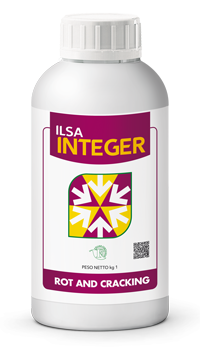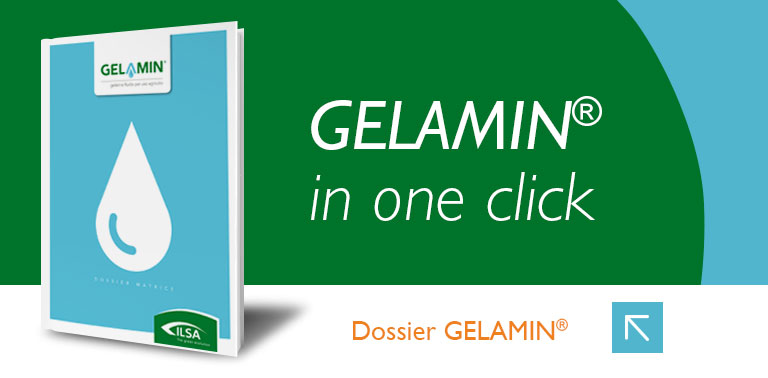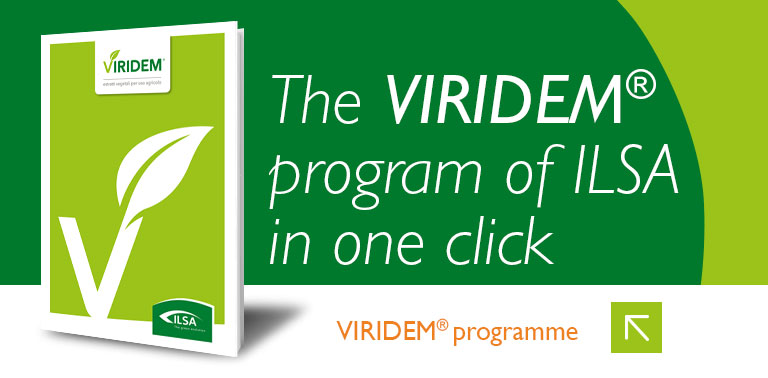AGAINST ROT AND CRACKING
Tomato, pepper, melon and all the other fruit vegetable crops are very susceptible to fruit cracking and rotphenomena, both in open field and in the greenhouse. Excessive fertilisation can cause fruits to develop desproportionately; these latter, if not provided with a resistantepidermis, can be more susceptible to cracking and pathogenic attacks. In open field, moreover, such risks areexacerbated by particular climate events (hailstorm, rain and thermal leaps), which put a strain on fruit integrity. Another major risk is rot, caused by nutritional deficiencies (like blossom end rot) or fungal agents penetratingthrough cracks.
ILSAINTEGER is a special product purposedly designed to reduce rot and cracking in tomatoes, peppers, melonsand other fruit vegetable crops, as well as tuber and root vegetable crops (potato, carrot and turnip).The high quantity of amino acids (alanine, lysine, serine, glycine and proline in particular) promotes the regulationof cell osmosis and the efficiency of nutrient absorption. Also, the high content of calcium and magnesium removesthe risks of deficiencies in these specific crops and, at the same time, the mechanical resistance of tissues is increased,thanks to supporting and strengthening of cell walls and membranes.
This way, ILSAINTEGER increases the value of final production, by reducing production waste and increasing the number of actually marketable fruits.
Chemical and physical features
- LIQUID AMBER YELLOW COLOUR
- pH 5,5 ± 0,5
- DENSITY 1,39 ± 0,02 kg/dm3
- CONDUCTIVITY 5,20 ± 0,20 dS/m
COMPOSITION
-
Total Nitrogen (N) 9 %
- Of which: Organic Nitrogen (N) 3 %
- Nitric Nitrogen (N) 6 %
- Water soluble Calcium (CaO) (%w/w) 9 %
- Water soluble Magnesium (MgO) 2 %
- Organic Carbon (C) 9 %
Contains in particular
- CO-FORMULANT FROM ENZYMATIC HYDROLYSIS
- CALCIUM
- MAGNESIUM
Characterising substances
- ALANINE, PROLINE, LYSINE, SERINE, GLYCINE, CALCIUM, MAGNESIUM
ACTIONS OF THE CHARACTERISING SUBSTANCES
| RESISTANCE OF THE FRUIT’S SKIN | REDUCTION OF ROT AND NUTRITIONAL DEFICIENCIES | |
|---|---|---|
| AMINO ACIDS FROM ENZYMATIC HYDROLYSIS |

|

|
| CALCIUM |

|

|
| MAGNESIUM |

|
Doses and methods of use of the fertilizer
-
Legumes and potatoes
-
Potato2-2,5 kg/ha2-3 applicazioni, ogni 10-15 giorni, durante lo sviluppo di tuberi e rizomi
-
-
Vegetables
-
Carrot2-2,5 kg/ha2-3 applicazioni, ogni 10-15 giorni, durante lo sviluppo di tuberi e rizomi
-
Courgette2-2,5 kg/ha2-3 applications, every 7-8 days, from fruit enlargement
-
Cucumber / Gherkin2-2,5 kg/ha2-3 applications, every 7-8 days, from fruit enlargement
-
Eggplant2,5 - 3 kg/ha2-3 applications, every 7-8 days, from fruit enlargement
-
Melon2-2,5 kg/ha2-3 applications, every 7-8 days, from fruit enlargement
-
Pepper2,5 - 3 kg/ha2-3 applications, every 7-8 days, from fruit enlargement
-
Pepper in greenhouse0,3-0,4 kg/1.000 m22-3 applications, every 7-8 days, from fruit enlargement
-
Radish2-2,5 kg/ha2-3 applicazioni, ogni 10-15 giorni, durante lo sviluppo di tuberi e rizomi
-
Strawberry2,5 - 3 kg/ha2-3 applications, every 7-8 days, from fruit enlargement
-
Tomato2,5 - 3 kg/ha2-3 applications, every 7-8 days, from fruit enlargement
-
Tomato in greenhouse0,3-0,4 kg/1.000 m22-3 applications, every 7-8 days, from fruit enlargement
-
Turnip2-2,5 kg/ha2-3 applicazioni, ogni 10-15 giorni, durante lo sviluppo di tuberi e rizomi
-
Watermelon2-2,5 kg/ha2-3 applications, every 7-8 days, from fruit enlargement
-
The dose indicated in the table has been calculated by taking into account an irrigation volume of about 500-600 litres of water per application. The doses shown should be considered as merely indicative and may vary according to pedoclimatic conditions and average yields expected.










.png)
















